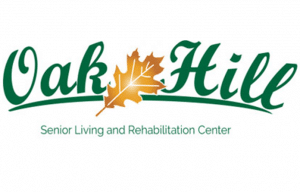Monroe County reports 12th coronavirus death; Cedarhurst worker tests positive
Monroe County reported another death related to coronavirus on Saturday in addition to a new case.
There are now 97 confirmed cases of COVID-19 here, while the death toll increased to 12, according to Monroe County Health Department Administrator John Wagner. Ten of those deaths in the county are attributed to an earlier outbreak at Garden Place Senior Living in Columbia.
Wagner said the latest death may be removed from the count as more information is gathered.
“(The) new death was a public positive who was quarantined at home and had a fall,” Wagner explained. “She was then taken to a hospital and passed away a few days after the fall. Since she was a positive, it will go in our count until reviewed and may change.”
Also, it was learned that an employee of Cedarhurst Senior Living in Waterloo has tested positive. Cedarhurst becomes the third senior care facility in Monroe County to have reported a case in addition to Garden Place in Columbia and Oak Hill Senior Living and Rehabilitation in Waterloo. Oak Hill reported three workers tested positive.
In a letter dated May 29 to residents, families and friends, Cedarhurst Living President and Co-Founder Josh Stevens said the employee will remain isolated in their home and will not return to work until they have two negative COVID-19 tests and are asympotomatic for 72 hours.
“The positive employee works in the assisted living building, so we are confident that the exposure was mitigated in the memory care building,” the letter states.
The assisted living building is at 526 Legacy Drive in Waterloo; the memory care building is at 518 Legacy Drive.
Due to the positive test, all Cedarhurst residents are being quarantined to their rooms. Cedarhurst also offered to test all residents and staff on Monday.
According to the Illinois Department of Public Health, there are 42 confirmed cases of the virus in the Columbia zip code (168 tests performed), 46 in the Waterloo zip code (279 tests performed) and nine in the Valmeyer zip code (35 tests performed).
The total amount of tests performed on Monroe County residents through private labs and in Missouri, however, is not known.
In St. Clair County, there are 1,299 confirmed cases, including 99 coronavirus-related deaths. A total of 7,769 people have been tested in that county.
Randolph County now has 272 confirmed cases, nine of which are active. Four people have died from the virus, 259 have recovered and one is hospitalized with it in that county.
Statewide, there are 122,848 cases of coronavirus and 5,525 deaths, according to the IDPH.
The state announced 1,614 new cases an 113 new deaths on Monday. There were 974 additional cases and 23 additional cases on Monday. There were 1,343 more cases and 60 more deaths on Sunday. 1,462 new cases and 61 new deaths on Saturday. There were 1,622 additional cases and 86 additional deaths on Friday. There were 1,527 more cases and 104 more deaths on Thursday. There were 1,111 new cases and 160 new deaths on Wednesday.
In Missouri, there were 13,575 confirmed cases and 783 deaths as of Tuesday. That includes 4,886 cases in St. Louis County and 1,839 cases in St. Louis City, according to the Missouri Department of Health & Senior Services.
Nationally, more than 1,831,469 people had contracted the virus as of Tuesday afternoon, while 105,771 people have died from it.
The pandemic has now spread to at least 177 countries, with over 6.2 million cases and at least 376,938 deaths worldwide.
Illinois moves to Phase 3
Each region in Illinois moved to the third phase of the state’s reopening plan on Friday, bringing life closer to normal than it has been in months.
“We are by no means out of the woods, but directionally, things are getting better,” Gov. JB Pritzker said when discussing this anticipated progress last week.
In phase 3, called “recovery,” there is a 10-person limit on gatherings, face coverings are required and social distancing will remain the norm.
Limited child care and summer programs are permitted.
In terms of businesses, bars and restaurants will be allowed to open for outdoor dining with capacity limits and social distancing measures in place, in addition to delivery, carry-out and drive-thru options.
The outdoor dining option was a change Pritzker announced last week, in addition to a few other less noteworthy ones. The General Assembly also approved a bill to allow establishments to sell cocktails to-go.
Personal care services and health clubs, which includes barbershops, health and fitness centers, salons, tattoo shops, hair braiders and spas, can be open if they follow guidance from the Illinois Department of Public Health.
Health clubs can also offer one-on-one training within their facilities or outdoor classes of up to 10 people with social distancing. That latter provision is new.
Retail stores and manufacturers can open with IDPH recommendations like social distancing, capacity limits and face coverings in place.
Health care providers, similarly, can all open with safety procedures set.
Non-essential businesses can have employees return to work with measures like social distancing and masks in place, though employers should encourage people to work remotely and provide accommodations for those particularly vulnerable to the coronavirus.
When it comes to travel, Centers for Disease Control and Prevention and the IDPH guidelines should be followed.
These change as the pandemic does, but generally suggest non-essential travel be kept to a minimum, particularly if you are going from or to an area with a significant COVID-19 outbreak.
People may be traveling more to engage in outdoor recreation, as state parks will reopen in this stage, including their concession stands.
Indoor and outdoor tennis facilities will also be permitted to open with safety precautions and capacity limits in place, and golf courses can allow foursomes out on the same tee times.
Golf carts are acceptable as long as it is only one person or household per cart.
Other outdoor activities like boating or camping are also allowed in groups of up to 10 people.
The Illinois Department of Commerce & Economic Opportunity also released industry-specific guidelines from the IDPH. These guidelines span 10 industries: manufacturing, health and fitness, offices, personal care services, retail, outdoor recreation, service counters, day camps, youth sports and restaurants and bars.
The DCEO also released guidelines for indoor and outdoor tennis facilities, boating and fishing and golf.
Each industry has its own multi-page document that covers topics like human resources and travel policies, health monitoring, physical workspaces, disinfecting/cleaning procedures, staffing and attendance, external interactions and customer behavior.
In most of those areas, the IDPH provides both minimum guidelines for businesses to meet and recommended best practices.
All documents also include a general health section that applies to all businesses.
That section has only minimum guidelines, which includes work from home if possible, wear face coverings when within six feet of others, maintain social distancing, provide hand washing or sanitizing capabilities for employees, wash your hands frequently and ensure you have adequate supplies for that.
Many of the recommendations do not apply much to those besides employees of a particular business, and several of those that apply to more people are the same.
Retail stores, personal care services and fitness centers, for example, all must allow a maximum of 50 percent store capacity or five customers per 1,000 square feet of retail space.
Personal care services and fitness centers can also provide services by reservation only.
In the former category, services are limited to those that can be performed while customer and employee are wearing a face covering. Additionally, massages and body treatments must be 30 minutes or less and customers must remain at least six feet apart.
Multiple outdoor workout classes can operate simultaneously, provided there is at least 30 feet of distance between groups.
Restaurants and bars must limit parties to six or fewer people. They will also have measures in place to prevent shared condiment containers or refilling beverages, instead providing a new glass each time.
For outdoor dining, tables must be six feet apart and away from the sidewalk. Masks and social distancing measures will be in place for staff, and patrons should wear a face covering except when eating or drinking.
Each business should post all these rules and more for its customers to see. Click here for more information.
As things begin to open up more, Monroe County municipalities will look to balance encouraging business and protecting public health.
“We are working on developing guidelines for allowing outdoor dining at Columbia restaurants,” Columbia City Administrator Douglas Brimm said, noting the city hopes to have a draft ready for the city council to review on Monday.
Columbia on Thursday announced it had drafted a temporary order with an application and permit process for outdoor seating and dining. The draft order requires business owners to follow guidelines issued by the DCEO, including having tables six feet apart. It also adds measures like outdoor dining only being allowed on paved or all-weather surfaces like gravel.
Waterloo is similarly considering how it could help businesses with outdoor dining, though Mayor Tom Smith was adamant that safety is the priority.
“What I don’t what is another Lake of the Ozarks in downtown Waterloo,” Smith said, referring to the national story that resulted after partygoers there ignored safety guidelines over the weekend. “You can’t have a street party, and that’s what my fear is. Then it’s going to be over with.”
On Friday, Waterloo announced on its Facebook page that some establishments in the downtown area will have parking spots blocked off to allow more space for outdoor dining. Businesses got special permits from the city to do that.
That is because a region could move back a phase if there is a sustained rise in positivity rate, sustained increase in hospital admissions for COVID-19-like illnesses, reduction in hospital capacity that threatens surge capabilities or a significant outbreak that threatens the health of a region.
Conversely, moving to the fourth phase of the plan, called “revitalization,” may be much more difficult and time-consuming.
As with moving to the third phase, a region must have a test positive rate under 20 percent that is increasing by no more than 10 percentage points over 14 days, no overall increase in hospital admissions for COVID-19-like illnesses for 28 days and surge capacity of at least 14 percent for ICU, medical and surgical beds and ventilators.
The area that could take longer than 28 days is testing and contact tracing.
To move to the next phase, a region must be able to test anyone regardless of symptoms or risk factors and have contact tracing and monitoring begin within 24 hours of diagnosis for more than 90 percent of cases.






